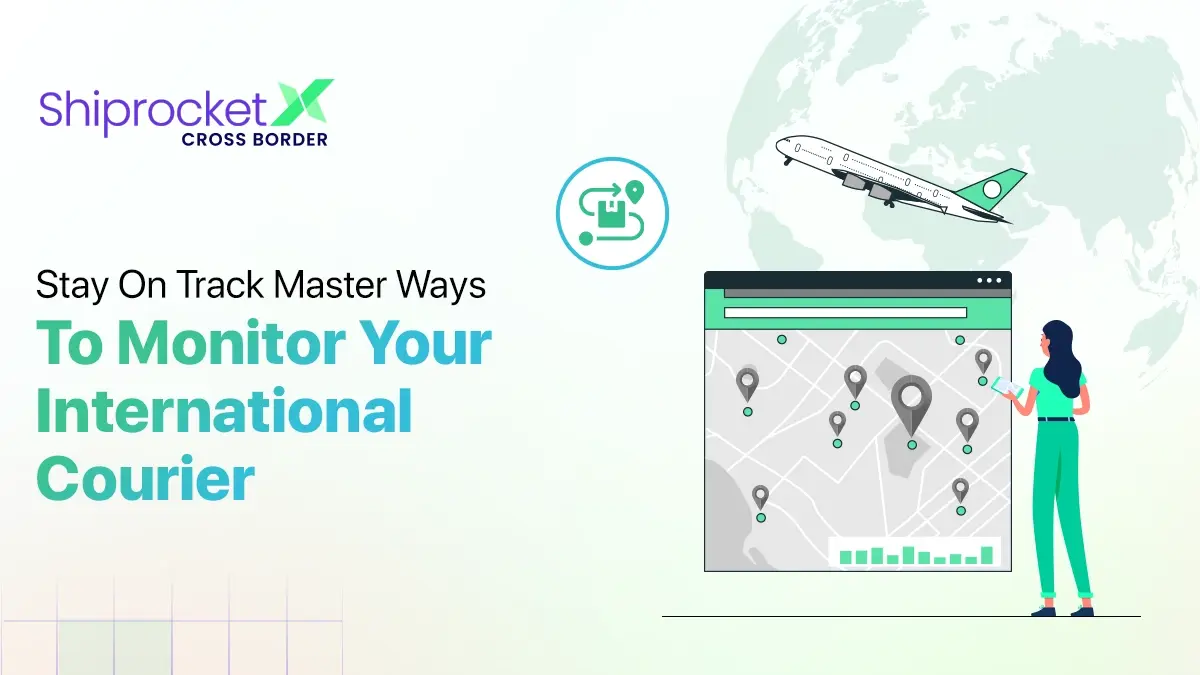Top 9 eCommerce Markets Worldwide for Online Sellers [2025]
eCommerce is booming and is one of the fastest-growing industries. It is expected to grow into a multi-billion dollar industry by 2030. While 2020 and 2021 were challenging times across the globe with several industries being hit hard and eCommerce adoption being accelerated and boomed to a new level.
Now, as time flies, more and more retailers are choosing online services to sell their products. This helps reach a larger base of customers within your city or state and your country and across the globe.
With this article, we shall cover the best marketplaces around the world that can be targeted in the year 2025. But before that, let’s understand the reasons why 2025 is the perfect time to take your online business globally.

The pandemic has forced people to change their shopping habits by switching to online platforms instead of the conventional physical ways of shopping.
With smartphones being used widely around the globe, m-commerce or mobile shopping is only increasing day by day. You can now list your products and anyone with a handheld device can shop from anywhere in the world.
Many courier companies deliver products across the world, thus enabling you to reach customers which otherwise are out of your demographic.
9 Global eCommerce Markets for Sellers to Sell in 2025

Here are the top 9 worldwide eCommerce markets in the world.
1. China
Without a doubt, China is one of the biggest eCommerce markets in the world. It makes USD 672 billion annually in sales. In the last 10 years alone, China has expanded its retail sales at a growth rate of 27.3% per year.
In 2019, the total eCommerce sales of China surpassed the combined total of Europe and the US and made for a 20% share of the global retail sales.
China has one of the largest populations when it comes to digital buying, and is one of the primary targets for sellers across the world for 2025.
2. United States
After China, the US is the second-largest eCommerce market globally, and retail sales are expected to hit USD 476.5 billion by 2024. The US market is flooded with sellers trying to sell products from across the world.
The most popular items sold in the US are books, music, video, electronics, office supplies and equipment, home furnishings, apparel, and health and beauty products. When compared with China, the laws are less strict making it a favorable eCommerce market amongst sellers.
3. United Kingdom
The United Kingdom ranks third amongst the top eCommerce marketplaces around the world. The United Kingdom makes up 14.5% of the world’s total eCommerce retail sales at an amount of USD 99 billion.
It houses some of the major players of the eCommerce industry, such as Amazon, Play.com, and Argos, making the UK one of the key players of the eCommerce industry. Some of the popular product categories include fashion, travel, sporting goods, and household items.
4. Japan
Japan is not only one of the largest eCommerce markets in the world, but also the fastest-growing. Japan was originally a B2B dominated market, however, in the last decade the B2C market has doubled and the C2C market has also shown considerable growth.
It is estimated that the Japanese B2C market is over USD 100 billion, and is expected to expand to USD 143.297 billion by 2025. Thus, undoubtedly, Japan will be one of the top eCommerce markets in 2025.
5. Germany
Germany is another top eCommerce market that can be tapped into if looking to expand your existing eCommerce customer base. Germany ranks as the second-largest eCommerce market in Europe and is ranked 5th in the world.
The annual online sales in Germany are at USD 73 billion or 8.4% of the total eCommerce sales worldwide and are expected to reach USD 117.019 billion by 2025. The top product categories are fashion, and electronics and media.
6. Russia
Russia is another fastest growing market for eCommerce sellers who are looking to expand their business. The revenue of the Russian eCommerce market is expected to touch USD 25.994 billion by 2021 and will continue to grow till 2025 at an annual rate of 5.2% to reach USD 31.809 billion.
The top product categories that can be sold in the Russian eCommerce market are electronics and media, both of which are a USD 7 billion market.
7. UAE
The UAE eCommerce market is expected to reach a revenue of USD 8 billion in 2025. Growing at a CAGR of 6.02% between 2025 and 2029, the revenue is expected to reach USD 10.11 billion by 2029. The UAE eCommerce market stands at the 43rd position currently..
8. Australia
The Australian eCommerce market is expected to reach a revenue of USD 42.04 billion by 2025. It is expected to grow further at a CAGR of 8.27% from 2025 to 2029 and reach USD 57.77 billion by 2029. Yahoo Finance estimates that the Australian eCommerce market will grow at a CAGR of 6.6% and reach USD 68.8 billion by 2027.
According to the Australia Post, some of the fastest-growing online shopping categories are food and liquor (20.6% of share), home and garden (29.3%), fashion and apparel (17.4%), health and beauty (4.6%), and more.
9. New Zealand
Revenue in New Zealand’s eCommerce market is expected to reach USD 5.85 billion in 2025, growing at a CAGR of 9.23% between 2025 and 2029. Moreover, the share of online shoppers is also expected to grow to 83% by 2026. Though revenue from the eCommerce market fell by 8.3% in 2022 due to customers returning to physical stores for shopping, it witnessed growth in 2023 and reached around USD 6.3 billion. It is expected to increase continuously in the coming years. By 2029, New Zealand’s eCommerce market is expected to reach a valuation of USD 8.34 billion.
Out of all segments, the fashion segment generated the highest revenue for the eCommerce industry in 2023, amounting to over USD 1 billion. Industries with the most online sales between 2022 and 2023 include travel and accommodation (60%), recreation (48%), homeware and furniture (23%), clothing and footwear (18%), and books and stationery (16%). New Zealand also ranks 48th in the world for eCommerce sales.
6 Tips to Make the Most of Cross-Border Shipping
Here are some points you should consider to make the most of cross-border shipping:
Communication and Planning
Establish clear communication lines with all stakeholders, including customs, logistics providers, business partners, etc. This way, you avoid misunderstandings and unnecessary delays. To prevent budget spikes and delays, you should also plan for potential risks like political instability, weather conditions, and seasonal fluctuations. Establish strong connections between suppliers, carriers, and customers to prevent delays by setting clear expectations for delivery times, maintaining open channels with shipping partners, and using data to predict shipping times.
Compliance and Regulations
You should comply with all relevant trade regulations to prevent shipment delays and seizures in the worst cases. Automate and digitise shipping processes to improve efficiency and reduce errors. Each country has unique import and export rules, duties, and associated taxes. You must research customs requirements for each destination country and ensure proper documentation, including invoices, declarations, and certificates. It’s also essential for you to stay updated on trade agreements and tariff changes.
Choosing Shipping Partners
Use reputable shipping carriers that enable you to track shipments in real time and offer risk mitigation plans and insurance options, especially in theft-prone areas. You can also consider partnering with bonded carriers or working with specialists, particularly in challenging markets. They can help you ensure your products and service levels meet customer expectations.
A reliable logistics partner can ensure smooth deliveries. You should always evaluate them based on coverage, reliability, and cost-effectiveness. Compare shipping providers based on transit times and rates, and choose the one with expertise in your industry and target markets.
Prioritise Customer Experience
Every eCommerce business needs to understand and anticipate customer needs by analysing transaction histories. Your customers abroad expect the same efficiency as your domestic customers, and relevant data can help you tailor your offerings, marketing strategy, etc. One of the most effective ways to enhance customer experience is to provide transparency and timely updates to your customers through automation and real-time tracking. You can also offer varied delivery options (economy, standard, or express) to meet customer needs and preferences. You must also clearly communicate any duties or taxes they must pay.
Leverage Advanced Technologies
Use dedicated software for optimising and managing different supply chain processes to ensure real-time visibility, transparency, and prompt issue resolutions. You can use AI-powered tools for demand forecasting and route optimisation, automated customs documentation to avoid delays, inventory management software to track inventory in real time, etc. The type of technology you adopt will depend on the complexity of the processes and the results you want to achieve, whether you want to reduce errors, improve efficiency, or something else.
Contingency and Risk Mitigation
Diversify modes of transportation, shipping routes, and shipping carriers to achieve flexibility. You must also maintain a buffer stock of important and highest-selling items to minimise disruptions, prevent lost sales opportunities, and avoid delays. You can also offer flexible return policies for international customers. Preparing for risks in advance can help you overcome unforeseen events like weather disruptions, customs delays, and supply chain issues, which can severely impact deliveries.
Affordable and Efficient International Shipping with ShiprocketX
ShiprocketX is a specialised cross-border logistics solution for eCommerce businesses, exporters, manufacturers, and more. It’s designed to simplify international shipping by providing a range of tools and services to help you expand your business globally and overcome challenges associated with global trade.
We enable you to sell from anywhere in India to over 220 global regions, including the USA, Australia, Canada, the UK, UAE, and Singapore. Here’s how we ensure quick and reliable international shipping:
- Multiple shipping methods
- Hassle-free customs clearance and tax compliance
- Automated order processing
- Real-time updates to keep your customers informed
- Insightful analytics dashboard that facilitates data-driven decision-making
- Simplified returns management
- Dedicated account manager and cross-border expert
Expand your business beyond borders at affordable rates starting at just INR 306 per 50 gm.
Conclusion
This article talked about the top worldwide eCommerce markets that can be tapped into if you are looking to expand your business, sales, and customer reach. While you may have insight about the markets and their product categories, you would still need proper planning, shipping solutions, and most importantly; courier services that deliver your products to these countries.
You can always get the assistance of Shiprocket’s 25+ courier services that deliver to 220+ international destinations in the world. With the service of Shiprocket, you can start selling your products to customers across the world. We wish you happy shipping and growing with Shiprocket!






Very Informative for Learners.Regards.